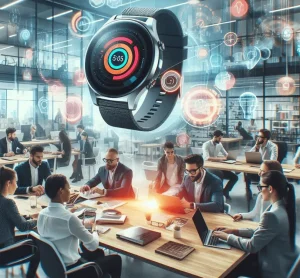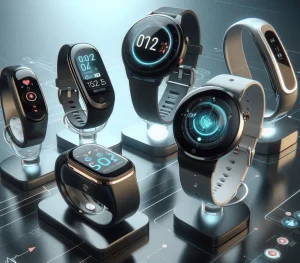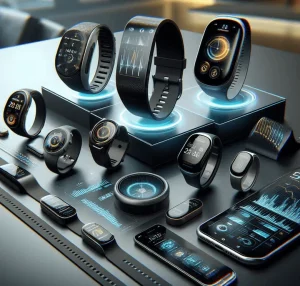Technology never fails to bring us exciting developments and always promises to make our lives better. In recent years, there has been an explosion of technological creativity and innovation, with bold projects being undertaken in all corners of the Earth: from wireless power, 3D printing, gamification, autonomous vehicles and Automatic Content Recognition, to mobile robots and – the topic of this post – The Internet of Things, or, as some call it, The Internet of Everything. Sounds grand? Well, it’s probably because it is. The promise of this enterprise is nothing short of game-changing, with the ultimate goal of bringing all inanimate objects to life, in a truly Frankenstein-esque fashion.
What is Internet of Things?
The Internet of Things (IoT) is a scenario in which every thing – device, human, network etc. – has a unique identifier and the ability to communicate over the Internet. The idea is to create a situation where we don’t have to control each piece of equipment separately, but instead have a top level control over a complex chain of integrated events, over an ‘army’ of interconnected devices that can communicate with each other as well as with us.
Internet of Everything combines several trends, including cloud computing, the growth of connected devices, Big Data, the increasing use of video, and the increasing importance of mobile apps compared to traditional computing applications. The Internet of Things is an evolutionary outcome of the trend towards ubiquitous computing, a trend that assumed the need of embedding processors in everyday objects.
Kevin Ashton, cofounder and executive director of the Auto-ID Center at MIT explains the potential of the Internet of Things:
“Today computers-and, therefore, the Internet-are almost wholly dependent on human beings for information. Nearly all of the roughly 50 petabytes (a petabyte is 1,024 terabytes) of data available on the Internet were first captured and created by human beings-by typing, pressing a record button, taking a digital picture or scanning a bar code…
“The problem is, people have limited time, attention and accuracy-all of which means they are not very good at capturing data about things in the real world… If we had computers that knew everything there was to know about things-using data they gathered without any help from us-we would be able to track and count everything, and greatly reduce waste, loss and cost. We would know when things needed replacing, repairing or recalling, and whether they were fresh or past their best.”
‘Run your world on a smartphone’
Although it still sounds like a futuristic fantasy, the IoT is already happening, with many technologies in very advanced stages of development. The potential of this technology has inspired developers to produce solutions geared both towards the consumer and the B2B market.
The battle for hearts and minds of consumers is centred around home automation, with companies such as SmartThings, Nest Labs and Ninja Blocks leading the way. Another important consumer-facing area is quantified self, which is playing a great role in developing consumers’ awareness of the potential of the IoT.
Beyond consumer, B2B vertical applications of the IoT hold considerable promise in a number of areas such as transportation, manufacturing, healthcare and retail.
Projects in development
SmartThings started as a Kickstarter project and has evolved into a slick company offering a range of nifty products, including physical gadgets for home automation as well as apps to control them. It is built on a cloud-based software platform that allows users to install apps into their lives that make the world more reactive and more enjoyable. More excitingly, SmartThings is building an open platform and is explicitly embracing the developer communities, paving the way to a more open and diverse environment, perfect for unrestricted creativity. The apps in development cover such areas as: Convenience, Family, Fun & Social, Green Living, Health and Fitness, and Safety and Security.
Another promising project, built to encourage open digital systems, is Xively Cloud Services™ (formerly Cosm and before that Pachube). It hails itself the ‘world’s first Public Cloud for the Internet of Things’ and aspires to provide a common ground through which any device connected to the Internet could actually communicate with any other device.
Like Cosm before it, Xively will offer a way for different devices to connect with each other, though now with commercial terms of service for commercial users and freely available services for projects in development. The existence of platforms such as Xively seems to be pivotal to building a true Internet of Things instead of what we actually have now.
Internet or Intranet?
So far, despite all the exciting developments, the Internet of Things is still in its infancy, with most devices connecting to the Internet but still unable to communicate with each other, creating de facto a plethora of Intranets of Things rather than one, unified Internet of Things. What is needed now for this technology to really take off is a common platform on which unrelated devices could connect, ideally an open source one to maximise the potential for future innovations and developer engagement. Devices on offer today are also still very pricey and their scope for inter-device communication is still quite limited.
In the future, the development of the IoT market will inevitably bring more compatible and affordable consumer products that will be available to more people. But, for all that talk about the benefits of the IoT, there seems that no one raising any real concerns, such as: what if the machines, able to communicate and relate to each other, will no longer need us and run away, or else, unite and turn against us? There must be a sci fi film about this scenario somewhere. Either way, epic times lie ahead.






More Stories
Elevate Your Efficiency: Streamlining Processes with IBM IoT Technology
Maximize Efficiency: How Private Cellular Networks Transform Operations
How to Learn Android App Development and Innovate